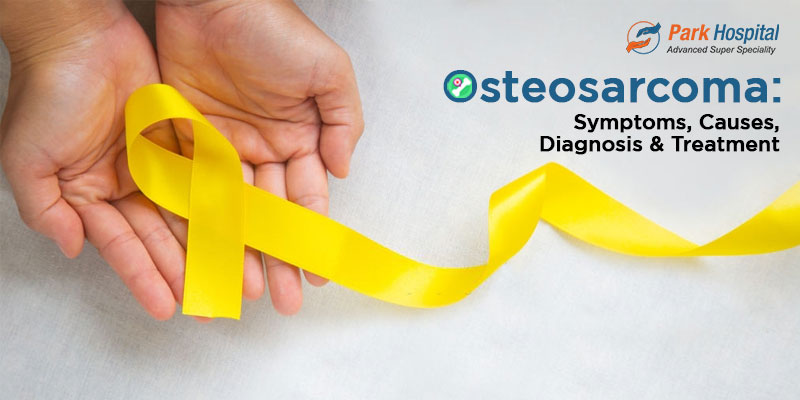All You Need To Know About Spinal Cord Tumor
A spinal tumor is an abnormal growth that is found anywhere along the spinal cord, the membranes covering the spinal cord and the vertebrae. A spinal tumor is classified into different types depending on malignancy, origin and location. But first let’s run through the make-up of the spinal column itself.
What we refer to as our spine or backbone is a long column of bones that starts at the base of the skull and runs to the end of our back at the tailbone which is at the pelvis. Within this column of bones is the spinal cord in the centre, starting from the brainstem to the lower back. The spinal cord’s function is to relay messages from the brain to the rest of the body and from all parts of the body to the brain.
A tumor can grow or spread into any part of the spine. While a spinal tumor refers to any tumor in the whole spinal column, a spinal cord tumor refers to a tumor in the spinal cord itself or the membranes covering the spinal cord. There are many different types of classifications for a spinal tumor.
Types of spinal tumor
Spinal tumors can be quite complex in nature considering that the spine runs through the body and due to the different cells, tissues and nerves that make up the spinal cord.
Based on origin and malignancy
There are primary spinal tumors which originate from the spinal column itself. Metastasis tumors are those that originate from elsewhere in the body and has spread to the spine. Tumors that spread that way are usually malignant or cancerous. So cancers that are benign are called bening tumors and cancers that are malignant are called malignant tumors.
Based on the region of the spine
The spine is divided in to four major regions and a tumor can be present in any of these areas:
Cervical is the neck area
Thoracic is the upper to middle back
Lumbar is the lower back
Sacrum is the bottom of the spine in the pelvis
Based on the location in the spinal cord
Spinal cord tumor can be of various types base don where it occurs within the spinal column.
Intradural-extramedullary tumor: This type of tumor is located inside the dura i.e., the covering around the spinal cord but lies external to the actual spinal cord. It is estimated that 40% of all spinal cord tumors are intradural-extramedullary.
Intramedullary tumor: This type of tumor is located within the spinal cord itself. This is a rarer form of spinal cord tumor accounting for 5% of cases seen.
Extradural tumor: This spinal cord tumor occurs outside the dura i.e., the covering around the spinal cord and into the bones of the spine i.e., the vertebrae. This accounts for 55% of all spinal cord tumors.
The importance of the location of the spinal cord tumor is the ease or the lack thereof of surgical intervention when and if required
Based on specific cells or tissues that a spinal cord tumor affects
Astrocytoma: This is a tumor of the supporting cells inside the spinal cord. There are even different kinds of astrocytoma that maybe benign or malignant.
Meningioma: This is a tumor of the tissue covering the spinal cord and brain known as the meninges. This is usually benign in nature but can grow large and become dangerous.
Spinal hemangioma: This tumor is formed from blood vessels within the spinal column. Spinal hemangioma are the most common kind of primary tumor and is benign in nature.
Shwannoma: This is a tumor from the cells surrounding the nerves of the spinal cord, peripheral nervous system and cranial nerves. Shwannomas usually remain benign.
Hemangioblastoma: This is a tumor that starts in the cells that cover the brain, spinal cord and brain stem. It is a rare tumor that is known to be benign usually.
Ependymoma: This is a tumor that occurs in the ependymal cells in the central nervous system.
Neurofibroma: Neurofibromas are generally benign tumors found to grow on the nerves. This could occur on spinal nerves as well.
Glioblastoma: This is an aggressive and cancerous tumor that forms from cells known as astrocytes. Astrocytes support the work of nerve cells in the spinal cord and brain.
Osteosarcoma: This is a bone cancer that can also start from the vertebrae.
Chordoma: This is a rare malignant tumor that is commonly found in the sacrum, the base of the spine, or the coccyx i.e., tailbone.
Symptoms of Spinal tumor
Symptoms of a spinal cord tumor start to show especially when the tumor starts to grow over a certain size affecting the spinal cord, nerves, blood vessels, or even the vertebrae. Some symptoms of a spinal tumor are
Back pain: Lower or middle back pain is a common symptom of both benign and malignant tumors. This pain cannot be associated with any incident, activity, or general exertion and starts slow and gradual till you notice that the pain is increasing. The pain is more at night or when you are resting.
Radiating pain: Another pain symptom is that the tumor could be pressing on some nerves so there may be pain that is radiating from the back to other parts of the body like hips, legs, feet or arms. It feels like a shooting pain.
Neurological symptoms:
Muscle weakness in the legs or arms.
There is a numb or tingling sensation in the arms and legs.
Difficulty walking and some severe cases of paralysis in parts of the body where the nerves are being compressed by the tumor is a symptom of a tumor.
Loss of bowel control and urinary incontinence could also be one of the presenting symptoms.
Spinal deformity is a severe symptom caused by a particularly large and growing tumor.
Causes of spinal tumors
While no definitive cause can be identified, there have been correlations that oncologists have drawn from cases of primary tumors. Many cases of primary tumors may have causes linked to being exposed to cancer-causing substances. Another ‘cause’ or correlation has to do with genetics.
Metastatic tumors are by definition caused by cancer elsewhere in the body that has got into the bloodstream and taken these cancer cells to other parts of the body. Metastates also occur when cancers nearby break off and form around the area of first cancer. In the case of spinal tumors, lung and breast cancer are found to commonly metastasize to spinal tumors.
Ninety-seven percent of all spinal tumors are metastatic tumors. In fact, it is highly likely for people with cancer to have metastasized cancer in the spine. Primary spinal tumors are relatively uncommon, however, they may be found in children too.
Treatment
Diagnosis of spinal tumors is usually doen using imaging tests, biopsy or even specific blood tests. Treatment for metastatic spinal tumors is to relieve the pain, and to help ensure the best possible outcome for the functioning of spinal system and improve and lengthen the life span of the person. Treatments are evaluated on a case-to-case basis and are highly individualised especially since the person may already be treating another cancer or in the case of a primary benign tumor, evaluate the risks involved in removing the tumor as opposed to letting it remain if no symptoms or danger is imminent.
Nevertheless, a host of doctors os multiple specialities come together to draw a treatment plan that could include one or more of the following.
Chemotherapy: Chemotherapy is used to kill cancer cells throughout the body. This may be used as a treatment along with or before surgery.
Radiation therapy: High doses of x-rays are used to destroy the tumor or shrink the tumor. In cases of a benign tumor as well, shrinking the tumor alone could make the symptoms go away.
Stereotactic radiosurgery: This is a non invasive procedure that allows the doctor to use very precise and narrow beams of radiation that can shrink the tumnor while being very careful with surrounding tissue.
Surgery: This is the first resort to treating a spinal tumor and is considered for life-threatening situations where the patient has a good prognosis.
It is important to note that if someone who has cancer or has had cancer complains of a persistent and worsening neck or back ache, then it is important to consult your oncologist and set up a consultation. You can also make an appointment with the Oncology Department at the Park Hospitals that have a multi speciality team that can review your medical histroy thoroughly, conduct the required tests and examinations to diagnose for spinal tumors, if any.
Conclusion
Spinal cord tumors are of different types depending on several factors that also determine how a doctor may treat it once diagnosed. Symptoms of back pain is a common complaint of people with a growing tumor in the spine. Spinal tumors need to evaluated thoroughly by a team of doctors to ensure the best treatment plan and outcome is weighed before going ahead.
FAQs
Is there a difference between spinal tumor and spinal cord tumor?
While they are often interchangeably used spinal tumor refers to growth in the the spinal cord, membranes surrounding the spinal cord and the vertebrae. Spinal cord tumor however refers to the spinal cord tumor refers to growth in the spinal cord and the membranes around it alone.
Is surgery necessary for spinal tumors?
Surgery is usually the last considered option by a doctor to manage or treat a spinal tumor. Spinal tumors need to be evaluated thoroughly before drawing out a treatment. A benign tumor that is not causing symptoms nor posing any danger may even be left to be.
Who treats a spinal tumor?
A team of different specialists are usually involved in the consultation, evaluation and decision-making of a treatment plan for a spinal tumor. This can include neurologists, neuro surgeons or spinal surgeons, oncologists, urologists, vascular surgeons, anesthesiologists to name a few.
What steps can I take in case I have a spinal tumor?
You need to consult a doctor at first and follow the treatment plan or the advice of your doctors. Make it a point to discuss with your doctors openly about any and all apprehensions that you may have and get as much clarity of your prognosis as is possible and have your close family understand the special requirements that you may need support with for your treatment. Living or being treated with spinal tumor can be difficult and you must reach out to near and dear to help you through it.

























































